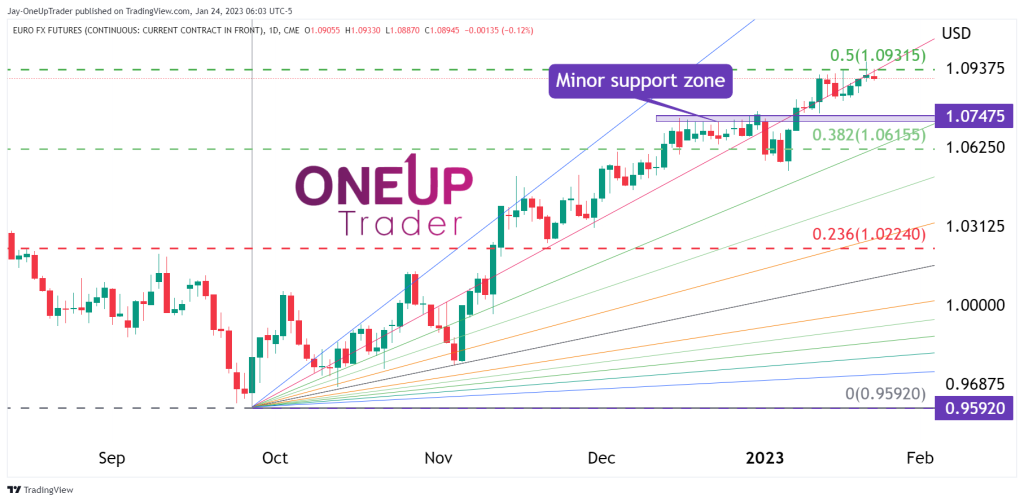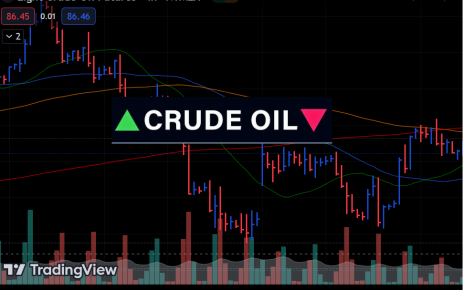- The latest in futures trading as the Euro sees a 14% increase against the dollar.
- How market analysts anticipate the Federal Reserve’s interest rate policy.
- Dollar weakness to affect future trends in 6E futures.
6E Futures surge 14% since September
The Euro has seen a significant increase of 14% against the dollar in recent months. This trend is expected to continue as market analysts anticipate that the Federal Reserve will slow down its interest rate policy. The weakening of the dollar is likely to persist in the foreseeable future.
Technical analysis
Fibonacci Fan: The Euro has been tracking the Fib fan well since the low put in September last year. The 0.618 line, in particular, has acted like a magnet for 6E Futures. It’s difficult to give targets in terms of prices using the Fib fan since there are no horizontal markings and dynamically changes over time. Looking at the chart, it’s difficult to find a short trade with a time frame of any longer than a week. It is equally as difficult to find a long trade, too, since the trend has been so strong, with extremely shallow retracements.
Minor support at $1.07: The only long trade I see in the short term is if price retraces back to the minor support zone at $1,07, which I labeled on the chart below. This is a far better option for bulls than chasing the market higher, especially with the fed meeting looming.
Fib Retracements: There is some resistance at the Fib 50 level ($1,09). This further adds to the probability of some sort of pullback or consolidation period from here.

Why risk management matters
A currency trader named Jérôme Kerviel made headlines for his role in one of the most considerable trading losses in history. Working at the French investment bank Société Générale, Kerviel had been secretly building up a massive position in Euro futures contracts. Despite repeated warnings from his superiors and compliance officers, he continued accumulating the position, believing that the Euro would rise in value against other currencies.
However, the opposite happened, and the global financial crisis of 2008 caused the Euro to drop rapidly. As a result, Kerviel’s position resulted in a loss of over 4.9 billion euros for the bank. Société Générale was forced to unwind the position at a significant loss, and Kerviel was subsequently fired. He was later charged with fraud and sentenced to five years in prison, although he has always maintained that the bank was aware of his actions and made him a scapegoat for their own risky business practices.





